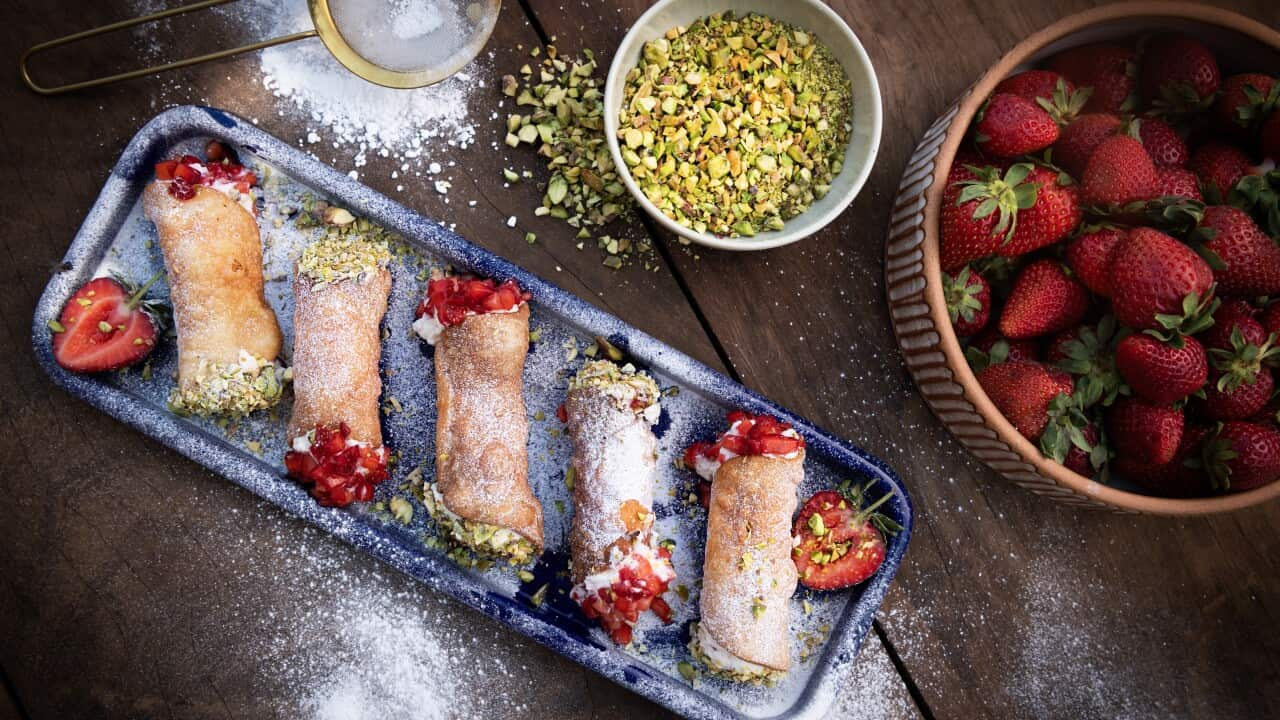Over a decade ago, chef Mark Mizzi of in Melbourne shared one of the most important meals of his life with his late father who was living in Malta.
Together, they ate a traditional Maltese sandwich, hobz biz-zejt. The meal was made with ftira, leavened bread that’s been part of the Maltese food culture since the 1740s. The ring-shaped bread roll was filled with the popular combination of tuna, olives, butter beans, capers, kunserva (tomato paste), onion, tomatoes and parsley.
“When I opened my Maltese restaurant in 2018, I made sure that the same sandwich I ate with my dad, created with traditional ftira, was on the menu. I emulated the exact dish and feeling behind the food to remember our last meal together.”
READ MORE

Open sandwich (hobz biz-zejt)
Hobz biz-zejt, made with freshly baked ftira, is still on the menu at Nanna’s Place today. Mizzi also sells ftira bread rolls, baked just as they do in Malta, with a hole in the middle.
“When you taste ftira, you taste Malta. The people in Malta are friendly, the food is beautiful and bread-making is a way of life. Ftira means a lot to me.”
Some say that ftira is to the Maltese what the baguette is to the French or banh mi is to the Vietnamese. In fact, ftira has such a cultural significance in Malta that it was added to the
“I believe the crunch of the bread is the reason it’s stood the test of time. It’s so unique.”
When you taste ftira, you taste Malta.
The UNESCO listing has guaranteed the authenticity of the nearly 300-year-old bakery product to ensure that the recipe and concept will be safeguarded for generations to come.
That means ftira will continue to be made and eaten by the Maltese and those with Maltese blood, living abroad – people just like Mizzi.
Ftira, style one: a flat ring-shaped roll
The Maltese-Australian chef is proud of the fact that he’s continuing the tradition of baking ftira, introducing the bread to customers of all cultural backgrounds in Victoria. Currently, he makes around 500 ftira a week, sold in the form of the traditional hobz biz-zejt sandwiches and as plain bread rolls.
“We explain to customers that ftira is artisanal bread that’s in between a ciabatta and sourdough, as far as taste is concerned.
“Our customers go nuts over it. Ftira has a cult following. Tradies and young people absolutely love Maltese bread.”
A lesson in bread-making
British chef and TV personality, Ainsley Harriott, was introduced to ftira while filming his new five-part series in the Mediterranean archipelago.
Harriott even got a cultural masterclass in all things ftira when visiting Maltese chef, who runs local ftira-making workshops.
“Ftira is a staple in our everyday life,” Mallia tells SBS, from Malta. “It is one of the foods that Malta has lived on [for centuries] and still lives on.
“I have been making ftira for as long as I can remember. It was one of my family’s favourites and mum used to do an amazing ftira.”
Maltese bread, style two: ftira Ghawdxija
Mallia explains that ftira can be traditionally presented in an alternative way to the bread roll you’ll find in supermarkets and bakeries across the country.
Ftira flatbread is also used to create a traditional pizza crossed with an open pie, called ftira Ghawdxija. This style is also called ‘Gozitan pizza’ as it was traditionally made by people living on the Maltese island of Gozo (even though it’s also found across the Maltese mainland). Mallia introduces Harriott to this variety during the new SBS
To make ftira Ghawdxija, the first step is to make the dough. Next, shape it into a circle. Add ingredients like tomato, anchovies, potatoes, onions, tuna and local cheese on top of the dough, just as you would add toppings to a pizza. But keep the outer rim of the dough clear. Lift and fold the outer edges of the dough so that they rise and create a wall to hold the filling.
“We then bake ftira in an oven, which is heated to about 300 to 350 degrees Celsius. I like to use a log oven because of its smoky taste.”
Ftira, made in any form, has something quite magical and mystical about it.
Mallia says this style of ftira is then sliced and eaten, preferably with a Maltese countryside or ocean view.
“Just imagine you’re on the beach in Malta eating ftira. At the same time, you can hear the sound of the sea crashing and smell beautiful salty Mediterranean Sea.
“I think ftira is an amazing food because of its taste and the experience that it gives to the person eating it.”
It’s obvious that, to Mallia and the people of Malta, the traditional bread is held up as something sacred. No matter how it's eaten, it’s honoured with a sense of national allegiance and ancient sentiment.
“Ftira, made in any form, has something quite magical and mystical about it. That’s because it’s not just part of Malta’s culture or tradition. Ftira is our way of life.”
More Maltese delights

Timpana: The pasta pie that delivers a taste of home for Maltese-Australians






